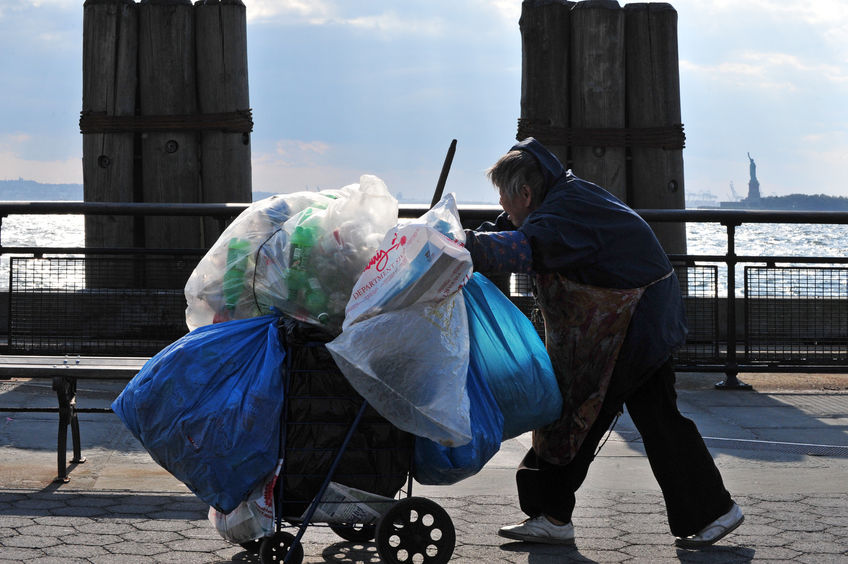Poverty: What It Is, Who It Affects, and What Can Be Done
May 16, 2018
The Bill and Melinda Gates Foundation is continuing its fight against poverty, announcing last week that it will be dedicating $158 million over the next four years to fight systemic poverty in the United States. Though the programs and grants are still unspecified, the initiative will be informed by the U.S. Partnership on Mobility from Poverty.
At the same time, the Poor People’s Campaign, an initiative originally spearheaded by Dr. Martin Luther King, Jr., is being revived. Calling itself “A National Call for Moral Revival,” the organization seeks to unite people “to challenge the evils of systemic racism, poverty, the war economy, ecological devastation and the nation’s distorted morality.”
Poverty is not a new term for many of us, but it is often used loosely. While we might see people panhandling on the side of the road, many of us fail to understand the extent to which poverty plagues the world, our country, and our state.
What is poverty?
According to the Merriam-Webster dictionary, poverty is defined as, “The state of one who lacks a usual or socially acceptable amount of money or material possessions.” The line that defines whether or not a person is living in poverty depends on location. According to the United Nations’ 2018 poverty guidelines, anyone who is living on less than $1.90 per day is living in extreme poverty. In the United States, it is defined as an individual living on less than $12,140 per year or a family of five living on less than $29,420 per year.
There are many reasons why a person might be living in poverty. According to the Borgen Project, a national campaign that fights global poverty, the main causes are war and political instability, national debt, discrimination and social inequality, and vulnerability to natural disasters.
It is hard to escape from poverty. Many extremely poor people suffer from health problems and often don’t have access to basic necessities such as water or food. And, without the resources or opportunities to pursue dreams, people get caught in a negative feedback loop.
How many people are living in poverty?
According to the United Nations, approximately 767 million people worldwide live on less than $1.90 per day. To put that number in perspective, the population of the United States is approximately 327 million. This means that more than double the population of the United States lives in poverty worldwide. With a world population of 7,740,000,000, according to the U.S. Census Bureau, this means that nearly 10 percent of the world’s population lives in poverty.
In the United States, approximately 40.6 million people live in poverty, according to 2016 figures from the U.S. Census Bureau, which translates to 12.4 percent of the population. That national percentage of people living in poverty is higher than the world’s percentage.
Angus Deaton, writing in The New York Times, reports, “According to the World Bank, 769 million people lived on less than $1.90 a day in 2013; they are the world’s very poorest. Of these, 3.2 million live in the United States.” However, Deaton posits that if one used $4 a day to represent the earnings of a person living in extreme poverty in the United States, the number would rise to 5.3 million. Clearly, the United States has a serious problem with poverty.
Poverty is a major problem in many countries. An example is India, which is a major player in world politics and is on its way to becoming a leading world economy. In 2015, CNN reported census data revealing that of the 300 million households surveyed, 73 percent of the population lived in villages. Of that 73 percent, fewer than 5 percent were able to pay their taxes, and only 2.5 percent owned a car. According to the World Bank website, 270,000,000 Indians are poor. The ratio of poor people in India is 1 to 5, or 20 percent.
New Mexico has some of the worst poverty in the country. According to 2017 data from the U.S. Census Bureau, New Mexico has the highest percentage of children under 5 living in poverty, or 36.2 percent. This is 5 percent higher than Mississippi, the state with the second highest amount of child poverty. These are the only two states where one in five people lives in poverty.
So, how can we help?
One simple way to help is through charity, through donating items such as canned foods, clothes, and money to organizations such as the Salvation Army and Goodwill. In Santa Fe, people can also volunteer at shelters, the Salvation Army, the Food Depot, and many more organizations. Many school organizations focus on helping those less fortunate in the community, such as NHS.
Poverty is a substantial issue facing much of the world. Though it may seem like a daunting task, it is possible to end it. Hans Rosling, a statistician who spent his life studying poverty, believed it is possible to rid the world of poverty. Before he died, he stated, “Compared with other enormous problems, like climate change or war, eradicating extreme poverty is like peanuts.”


